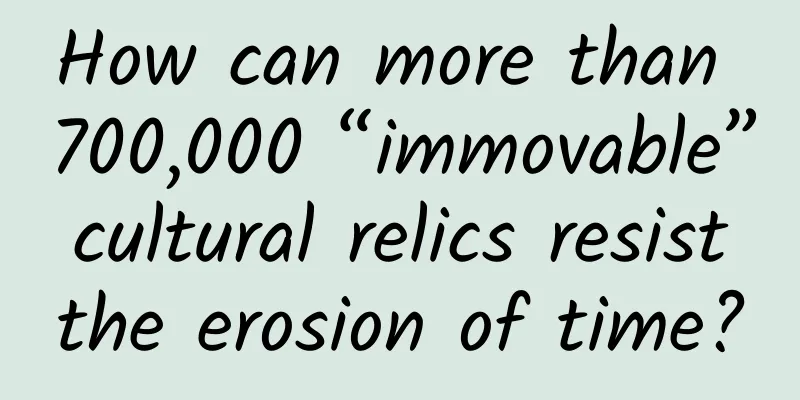Design like a psychologist! 5 practical tips to control user behavior

|
Have you tried various design strategies and methods that can influence user behavior? Whether it is a clear color scheme, A/B testing, or strategically adding various trigger mechanisms to the landing page? As a designer, if you know enough about the user's behavior mechanism, you can make the design more effective. In today's article, we share the 5 most common mechanisms that affect user behavior, hoping to be more helpful to your design. 1. Use social proof
Have you ever found yourself relying on other people’s opinions (especially approval) to help you make decisions? Whether consciously or unconsciously, this happens all the time. A simple example is when you are looking for a place to have lunch. There are two adjacent restaurants. One has a long queue at the door, while the other has no one waiting. Which one would you go to? You are likely to follow the queue out of curiosity. In fact, a considerable number of Internet celebrity restaurants have achieved user growth based on such a social recognition mechanism. Why is this so? The mechanism behind this is easy to understand. If a restaurant is packed with people and there are people waiting patiently at the door to eat, then its food must be very good. Similarly, if another restaurant is empty, you will naturally guess that the food is not good. Of course, even if your assumption is not correct, you will try to choose the one with more people. This is one of the most common examples of the social proof mechanism. When you are a consumer and do not have a deep enough understanding of the object you choose, your decision-making mechanism will largely rely on the decisions and behaviors of people around you. In other words, considering the time and economic costs, you will make decisions based on your own preferences and follow the trends of the public and the crowd. Therefore, if the vast majority of people say something is good or bad, then the remaining people are very likely to follow the crowd and accept this statement, or even agree with it. What drives our thinking and behavior is the dominant social trends and forces, which make people unconsciously explore and seek social recognition. ——Dragos Bratasanu Like many things, social proof has two sides. On the one hand, it is a powerful tool that can be used to influence user behavior. You can ask users to write reviews, use user recommendations and positive comments as high-quality material, and use them as social proof to enhance the value of your product. You definitely want others to be interested in your product and increase sales, right? 2. Use the influence of the peak-end rule
The Peak-End Rule is also a very famous user behavior law. It is a psychological effect discovered by Nobel Prize winner and psychologist Daniel Kahneman. According to Kahneman, everyone actually has two different selves:
The differences and unique operating mechanisms of these two selves ultimately led to the unique psychological and behavioral phenomenon of the Peak-End Principle, which reflects the way humans usually remember experiences: users usually only remember the "peak" and "end" of the entire experience, rather than the entire experience. The "peak" of the experience is usually the most exciting node in the entire experience, whether positive or negative. The "end" is the moment of the entire experience. Take ice cream as an example, let's analyze it briefly. Your brain itself doesn't care how long it takes you to get to the store, and you usually don't think carefully about how many bites of the ice cream you need to take and how long it will take to finish. Your brain pays more attention to whether you can buy delicious ice cream this time, and how you feel when you finally finish eating the ice cream. In other words, you like ice cream and care about ice cream, but you don't think about what the store clerk is wearing the whole time. The experience nodes and memories gained from buying ice cream this time will affect your future decisions. You may not even remember the specific price of the ice cream, who handed you the ice cream at the counter, and what color his clothes were. You will only retain the emotions about the ice cream. People will forget what you said. They will not remember what you did. But they will probably never forget how you made them feel. --Maya Angelou Therefore, in order to impact your users, you need to inspire strong enough emotional memories that the experience eventually becomes part of their memory. To take full advantage of the Peak-End Principle, you can use story mapping to create an emotional peak and satisfying ending for the entire user experience. 3. Make good use of welfare gifts
One of the cornerstones of successful businesses and products is to pay first and then reap the rewards. You need to develop a corresponding reward system for loyal users, provide free materials and gifts: you can actively convey brand value to users, provide users with free trial content, and create more positive word of mouth. Try to motivate users to buy new products by offering limited-time, limited-quantity discounts and gift services, so that users can try first and then use them. In this way, let users profit from trial products first, thereby guiding them to subscribe and purchase. This can also improve the relationship with consumers. Such benefits and gifts are an effective way to keep in touch with users, which can increase user loyalty. In addition, users who receive such free gifts can enjoy a more positive experience, thus having a greater chance of sharing their feelings and converting into paying users. Cultivate users' purchasing habits. Allowing users to use your product for free is actually one of the most effective ways to promote sales. If your users gradually like your product after trying it for free, then it will be natural for them to purchase paid courses and products later. Free gifts and benefits are ways to influence users and promote effective interaction between users and your product. In addition, free gifts are benefits that are hard to refuse. Therefore, more artistic "giving away" techniques can make users more interested in your product benefits. 4. Arouse user curiosity
Curiosity is another way to influence users. Because the user's decision-making process is driven by both emotion and reason. Among all the driving forces, emotion is more powerful than reason. This is closely related to the working mechanism of the human brain. Human curiosity is natural, and we will instinctively look for answers to some things. Whether it is good or bad, most people will not stay still and will always explore something. Curiosity is undoubtedly a powerful driving force for conversion. If you scratch the user's itch, they will actively scratch it. 5. Provide pleasure
Sometimes, all you need to do to influence users is to make them happy. Providing simple, minimalist solutions that meet or exceed user expectations is a good way to do this. Here are some practical tips to make users love your product:
Users remember and are interested in small, unexpected, and playful details in your product. So you need to focus on creating user-friendly products that are intuitive, fun, and easy to use. This will help you engage your users and influence their behavior. Final words
Try to use the above 5 methods to influence users and guide their behavior changes more effectively. The number of users will grow more rapidly, the interaction will be stronger, and the conversion rate will be higher. The final result may surprise you. |
<<: Apple releases new iOS 12.3 beta: Improved speed and stability
Recommend
Huawei's new processor Kirin 650 is fully exposed: the first model will be this one!
After releasing P9, Huawei has another new produc...
Dong Mingzhu talks about her new year goals and will join hands with Yinlong to enter the automotive air conditioning market
According to Gree Electric's official Weibo a...
“Heating food in a microwave oven can produce carcinogens”, is this true?
As a small household appliance that almost every ...
Multiple Chinese rescue teams rushed to Türkiye. Do you know about international rescue?
China Science and Technology News Network, Februa...
The new live streaming room traffic code for disco + selling goods!
As the mobile Internet dividend fades, traffic an...
Genes from bacteria can actually affect courtship?
Recently, researchers from Zhejiang University di...
Where to buy Qunar? How to use vouchers to attract new users and promote their activation?
There is less than a month left until Chinese Val...
Introduction to Baidu search promotion broad matching method!
What is Broad Match With broad matching, when net...
TCL re-starts color technology revolution; 2015 CES may become a watershed for the TV industry
At the 2015 CES, which saw a return to the home a...
Dog training skills teaching video, free dog training tutorial video collection Baidu cloud
This is a complete set of dog training video tuto...
Nokia's mistake leaves scar on Microsoft: biggest quarterly loss in history
[[141611]] Microsoft has released its financial r...
China Automobile Dealers Association: Dealers' used car business scale and profits grew rapidly in 2021
2021 is a difficult year for my country's aut...
Ten thousand words long article, detailed explanation of online operation strategy
Contents: Self-help strategies to maintain cash f...
Virtuality or reality is not important, promoting economic development is king
Recently, various opinions have emerged on the de...
Look at how the ancients celebrated New Year’s Day, that’s how we celebrate a festival!
New Year Come with the New Year's vigor Come ...









